
In theory, we can probably hypothesize that a counterfeit driver is going to perform worse than the real thing, right? Have you ever wondered how much worse it might be though?
We recently got a counterfeit club to test once somebody with poor moral integrity exchanged out a PING G400 driver head with a counterfeit head when they went out on our driving range to test their club. (PIECE OF ADVICE: If you EVER find yourself in possession of a cheap, knock-off club, let me give you some advice. Do NOT do what this dummy did! And when we find the Rebel scum who did this, we will string them up by their toes and let the crows attack…)
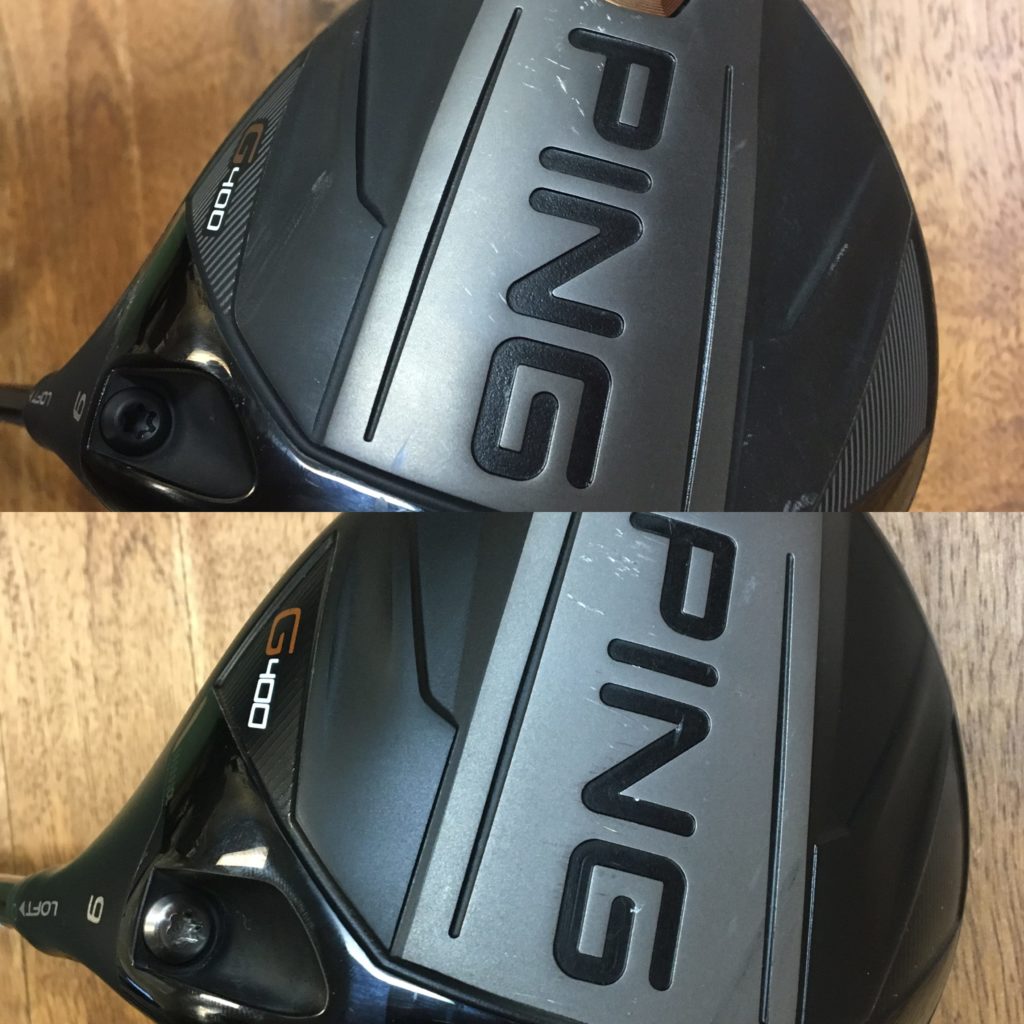
Anyway, we thought we might as well test the counterfeit PING G400 driver against the real thing since we now had one on hand and share the results with our readers.
Official scientific experiment beginning… NOW!
Hypothesis: The counterfeit driver will be substantially inferior because the driver head was not produced with the same quality of materials, design, nor standards as the genuine Ping product
Materials: (26) Srixon Range Balls, (1) Fake Ping G400 Driver Head –
Research: The defining characteristics of the Ping G400 Driver are a new forged T9S+ face that promises tighter dispersion, a higher density tungsten back weight, better acoustics due to redesigned rib structure, and club head streamlining.
Procedure
This procedure was created in order to test around the main selling points of Ping’s G400 driver. We will be testing weight, acoustics, consistency, club speed, ball speed, launch angle, spin rate, carry distance, landing angle, and overall distance between the fake and genuine Ping G400 Driver.
Firstly, both driver heads will be weighed separately on a scale. The heads will be weighed in their entirety with the tungsten weights attached. Next, the tungsten weights will be removed and weighed separately from the
The scratch golfer will not be told which club is genuine. The sound of impact will be recorded in six sound clips that will be labeled “A” through ”F” randomly. These six sound clips will then be played blindly and randomly for fifteen staff members at the Haggin Oaks Golf Complex. These individuals will be asked to assign the clips into two categories; the “better” (the definition of “better” will be left to the individual tested to define on his or her own) sounding three and the “worse” sounding three.
Following this test, the clubs will be taken to the Haggin Oaks Player Performance Studio. There, a scratch golfer will hit 5 balls with the fake driver, 5 balls with the genuine club, then an additional 5 balls with the fake club, and finishing with 5 more using the genuine club for a total of 20 Srixon Range balls hit. These swings will be recorded by the TrackMan Launch Monitor. The TrackMan Launch
All eleven measurements from the entire test will be compiled and a determination made on the performance of the clubs in comparison to one another.
Experiment Results
To start, it was pretty obvious to tell the fake PING G400 driver when comparing it up against the authentic club in terms of looks. As you can see in these pictures, the graphics aren’t straight on the counterfeit club.
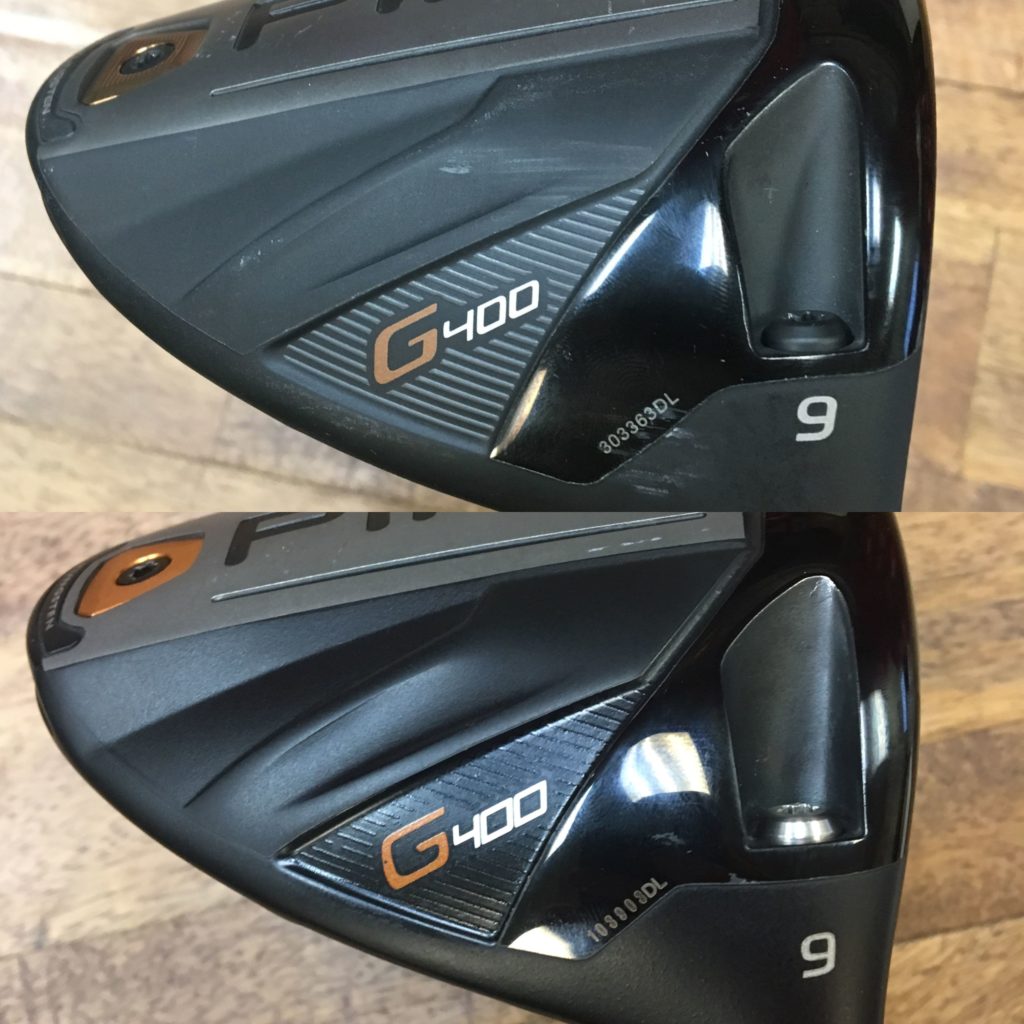
The “tungsten” weight is also obviously made of a different material in the fake club. It isn’t even the same color. It will be interesting once both weights are weighed on our scale to see the differences here.
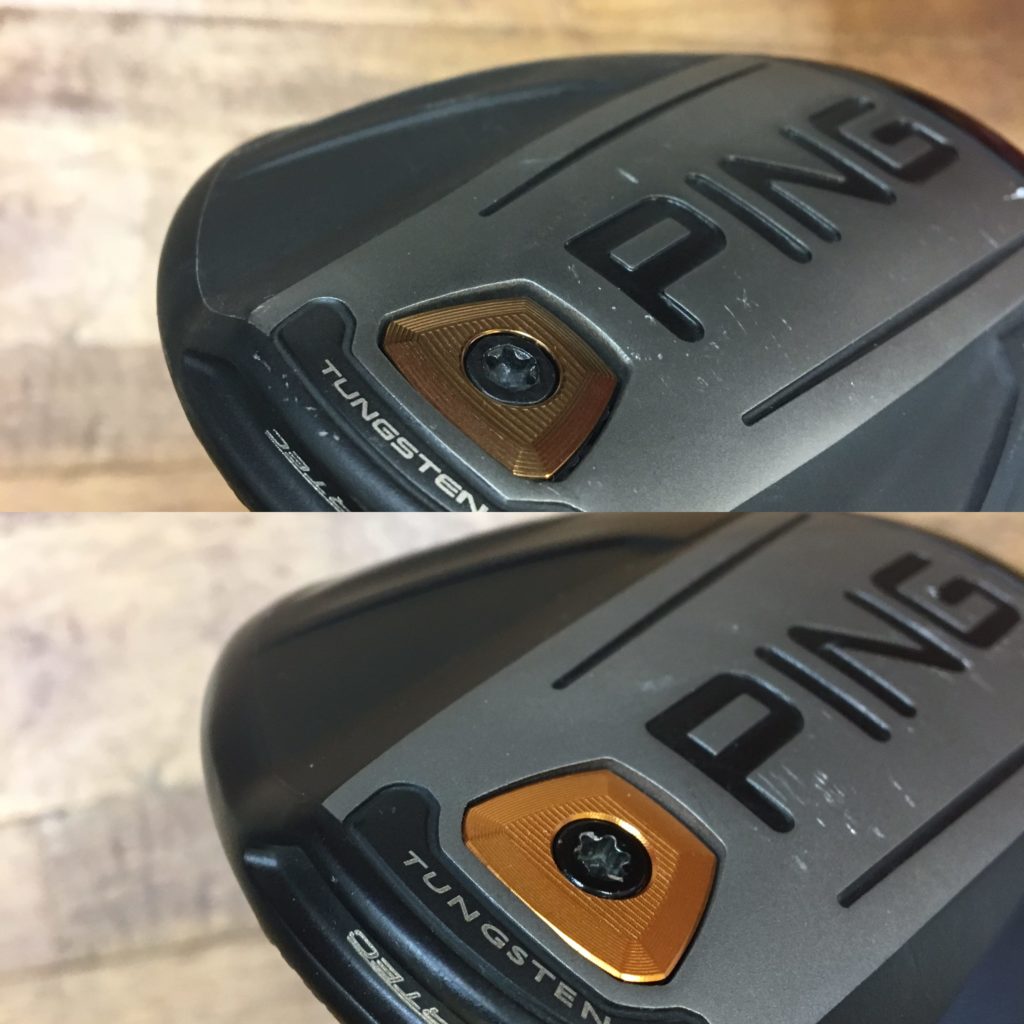
You can obviously tell the difference in the face and crown as well. The counterfeit club has a significantly less textured feel than the genuine club. The crown is also matte on the genuine Ping G400 driver, while the fake club is much more glossy.
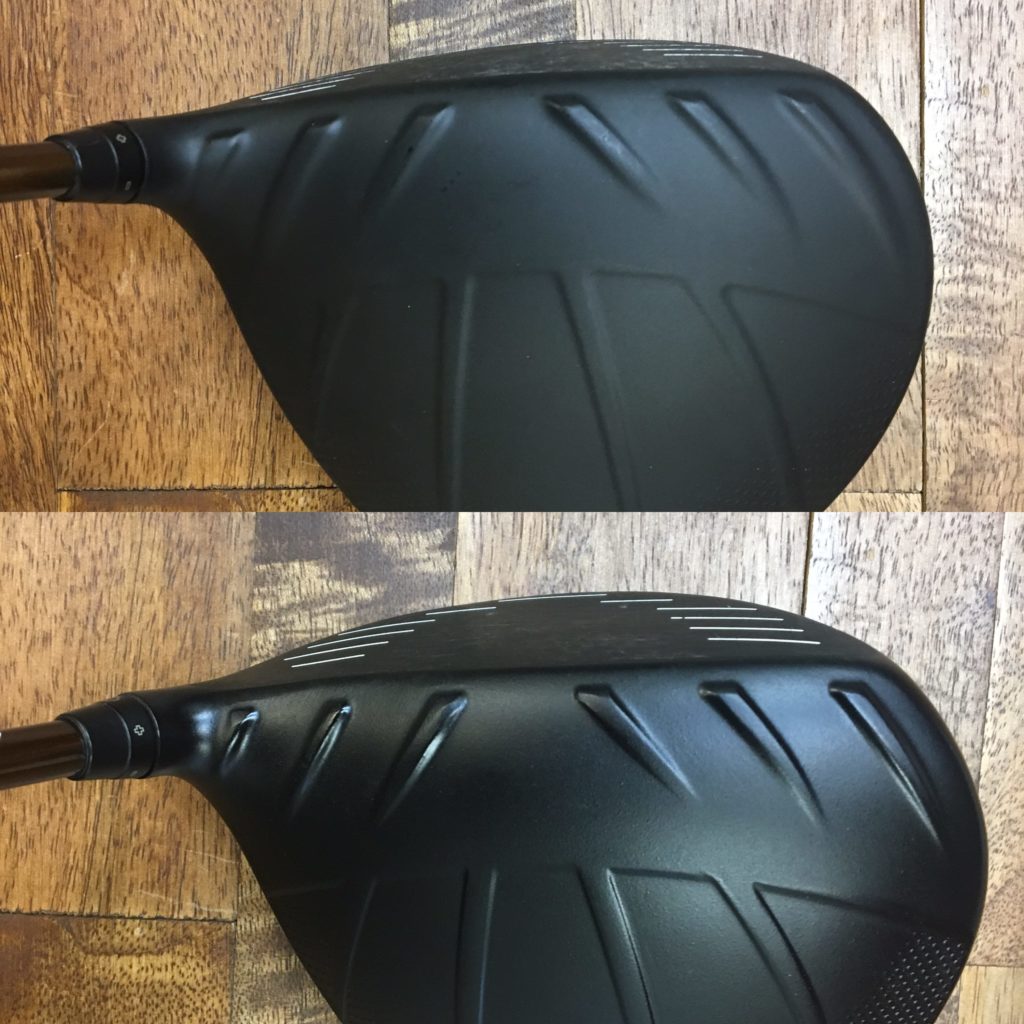
By using the TrackMan Launch Monitor, we were able to find the following results. The genuine Ping G400 driver had an average club head speed 1.3 miles per hour faster than the fake driver. The genuine Ping G400 driver had an average ball speed 1.1 miles per hour faster when compared against the fake driver.
The fake G400 driver had an average launch angle 1.5 degrees higher than the genuine Ping G400 driver. The average spin rate of the genuine Ping G400 driver was 999 rotations per minute lower than that of the counterfeit driver. The genuine Ping G400 driver averaged a 14.5 yard carry farther than the fake G400 driver. The landing angle of the fake G400 driver was 6.3 degrees steeper than that of the genuine Ping G400 driver. The genuine Ping G400 Driver averaged a total distance that was 21.1 yards farther than the fake G400 driver.
The scale test also produced interesting results as well. When we removed the genuine Ping G400 driver head from the shaft and took out its tungsten weight, it weighed 189.942 grams. The stock genuine Ping G400 tungsten weight was an additional 9.922 grams. In comparison, the counterfeit G400 head without its “tungsten” weight, weighed 193.910 grams and its “tungsten” weight weighed 5.103 grams. Overall, the genuine Ping G400 driver head was heavier by .850 grams.
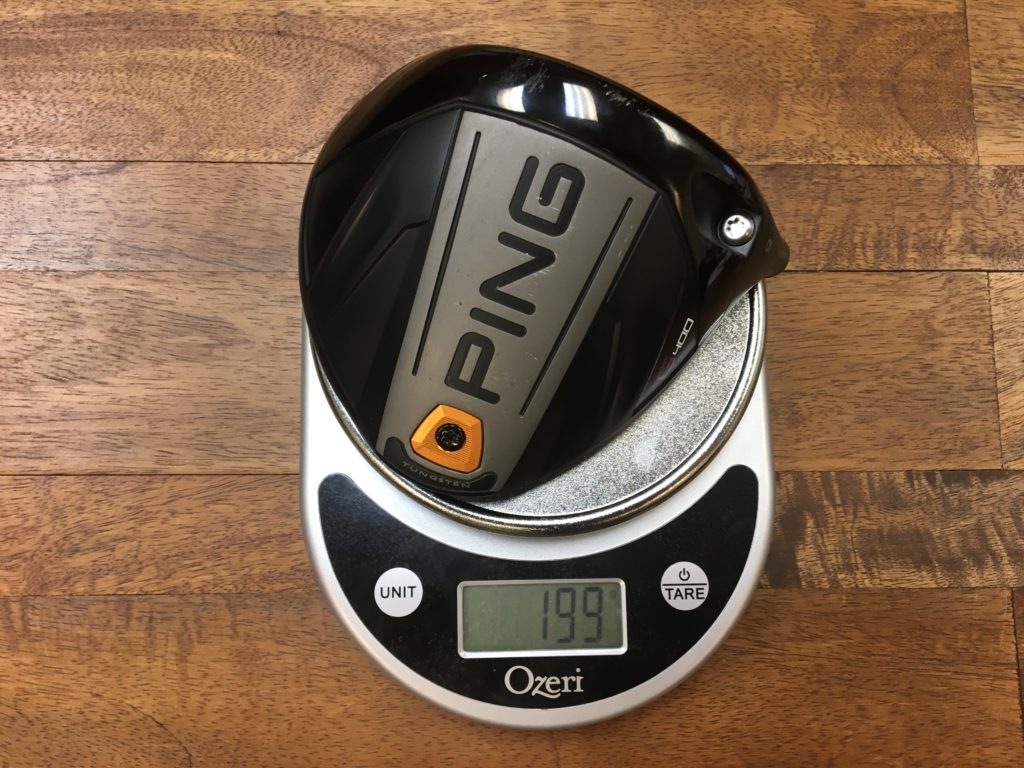
The sound test results revealed that of the 15 people we polled, only 3 people showed a preference for the sound of the counterfeit driver. This means that 80% of people prefer the sound of the genuine Ping G400 driver in a blind sound test. Additionally, the average preference for the genuine Ping G400 driver was 66.67%.
Here are the results of the testing we did on the TrackMan. The real PING G400 driver is shown in blue and the fake driver is shown in red. Our golf professional who hit both drivers was Ben Ledbetter. Ben is a scratch golfer.
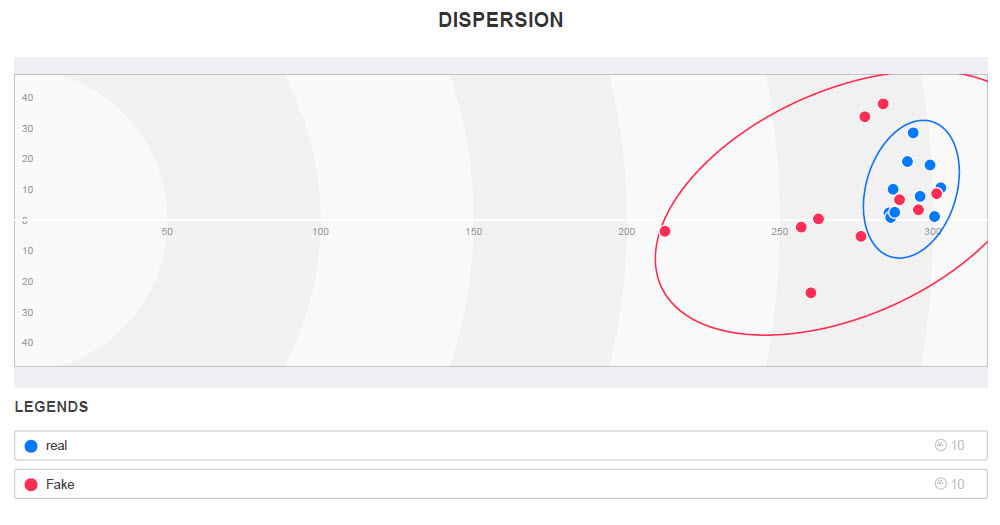
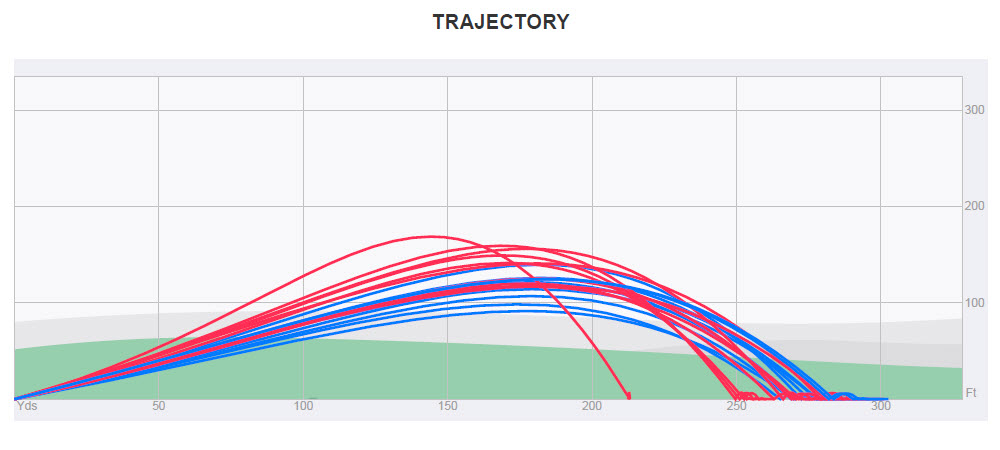
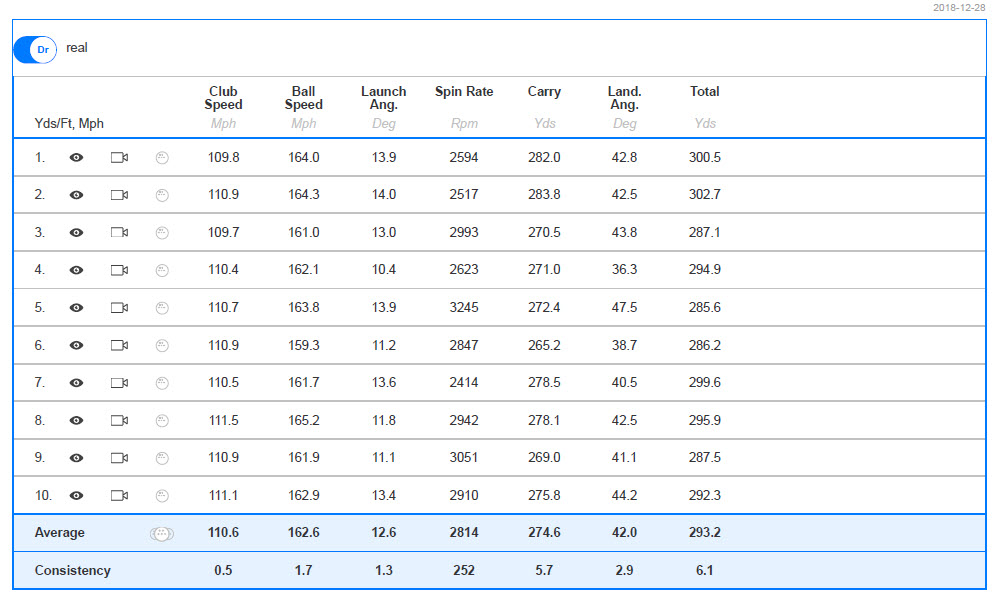
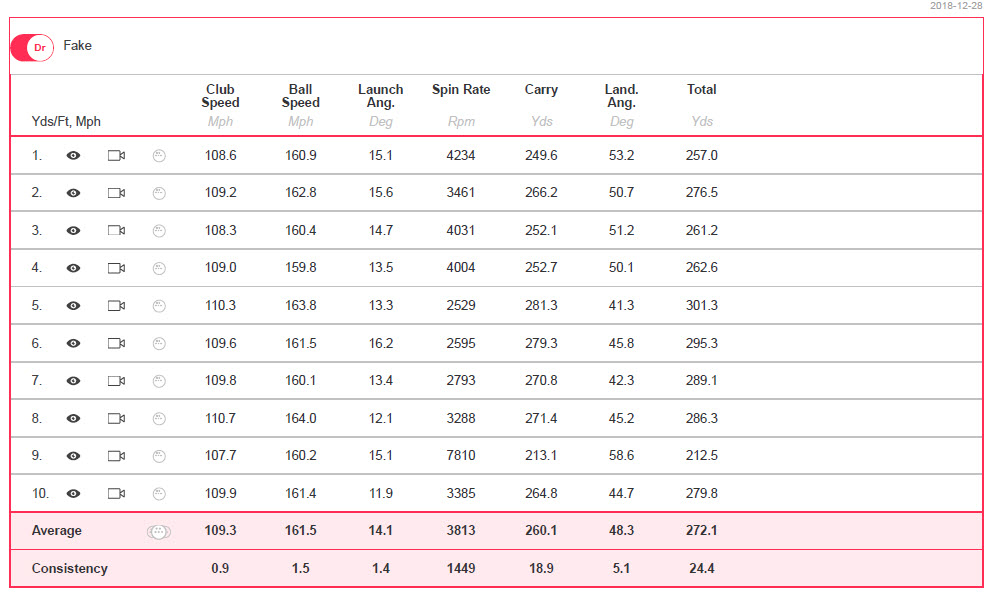


Analysis
The increased club speed of the genuine Ping G400 driver suggests that the fake driver head does not have as streamlined aerodynamic properties as the genuine product. This is further supported by the fake driver having more angular ridging along the crown and the paint being less smooth
Furthermore, the fake G400 driver exhibited a launch angle that was much higher than the genuine Ping G400 driver. Since the shafts were identical, this would suggest that the nine-degree loft claimed on the fake driver’s head is inaccurate. Hence, it is likely the face of the counterfeit G400 driver has a higher loft than the genuine Ping G400 driver.
The faces of the clubs clearly differ as well because the genuine Ping driver has drastically less ball spin and faster ball speed. Physically, the fake G400 driver face does not feel as textured
Ultimately, all the factors cultivate to result in the genuine Ping G400 Driver traveling an average of 21.1 yards further than the fake driver. However, more noticeably, the genuine Ping G400 driver is drastically more consistent than its fake counterpart. In every category, except ball speed, the genuine Ping G400 driver exhibited more consistent results.
Most importantly, the genuine Ping G400 driver had a much tighter grouping of shots. This would imply that the genuine Ping G400 is more forgiving. Ben Ledbetter, the PGA Golf Professional who hit the clubs on the range, commented on the fake G400 driver while hitting it during the experiment. He was overheard saying, “I can generally tell what the ball is going to do by feel when I hit it, but this thing doesn’t do what I think it will.” This statement supports the results recorded.
This consistency difference would be partially explained by the weight test. Here, it was found that although both clubs have a very similar total weight, the genuine Ping G400 driver has a much heavier tungsten weight. This means that the genuine Ping G400 driver has a significantly higher moment of inertia (MOI) and will be more forgiving. The tungsten weight test also revealed that the counterfeit G400 driver is most likely using a different metal than tungsten for its weight insert. It was too large and too light to be tungsten, which is understandable because tungsten is an expensive material and an expense likely not spent by someone counterfeiting clubs.
As for the sound test, the vast majority of the people tested preferred the sound of the real Ping G400 driver. The genuine Ping G400 driver has an audibly higher tone on impact when compared to the counterfeit club. Most people preferred this high tone because, as one participant wrote, it has a “crisper sound at impact.” The sound files used for the experiment and the answer key can be found below. Can you hear the difference?
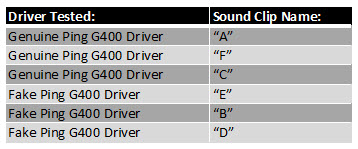
Conclusions
The performance differences between the genuine Ping G400 driver and the counterfeit club are substantial. The genuine Ping G400 driver hit an average of 21.1 yards farther than its fake counterpart. Likewise, the genuine Ping G400 club had an average of 999 fewer rotations per minute (RPM) when tested. However more noticeable than either statistic, the real Ping G400 driver was much more consistent, probably thanks to its higher moment of inertia (MOI). The grouping of shots on the range was drastically tighter with the genuine Ping G400 driver. The materials and construction of the real club also seem much better compared to the counterfeit driver. The “tungsten” weight on the fake G400 driver is not heavy enough to be real.
Furthermore, the fake club exhibited noticeably more wear on the face and leading edge after being used than the real Ping G400. As for the sound, Ping’s engineers will be proud to hear that 80% of people preferred the sound of the genuine Ping G400 driver in a blind test compared to the counterfeit club. Overall, none of us here at Morton Golf would ever recommend an illegal counterfeit club. First of all, the ethics of patent violation is one we take seriously. The performance of these fake golf clubs is substantially flawed and inferior in nearly every way to the genuine products. We also now have the concrete evidence to confirm that.
If you would like to shop for a genuine PING G400 Driver, come into the Haggin Oaks Golf Super Shop or click HERE to shop online at MortonGolfSales.com – an authorized online PING distributor.
Authored by Taylor Morton


Test Compares Ping Driver vs Counterfeit Counterpart - The Golf Wire
[…] 3rd generation Morton Golf employee Taylor Morton took a break from studying engineering at the University of Nevada Reno to run some interesting club and ball tests for the Haggin Oaks Golf Super Shop and its online storefront, MortonGolfSales.com, over the winter holiday. One of those included running tests on comparing a PING G400 driver versus its counterfeit counterpart and measuring overall distance, ball RPM, ball speed, trajectory, dispersion, durability, sound and more. You can read the detailed results of the test HERE. […]